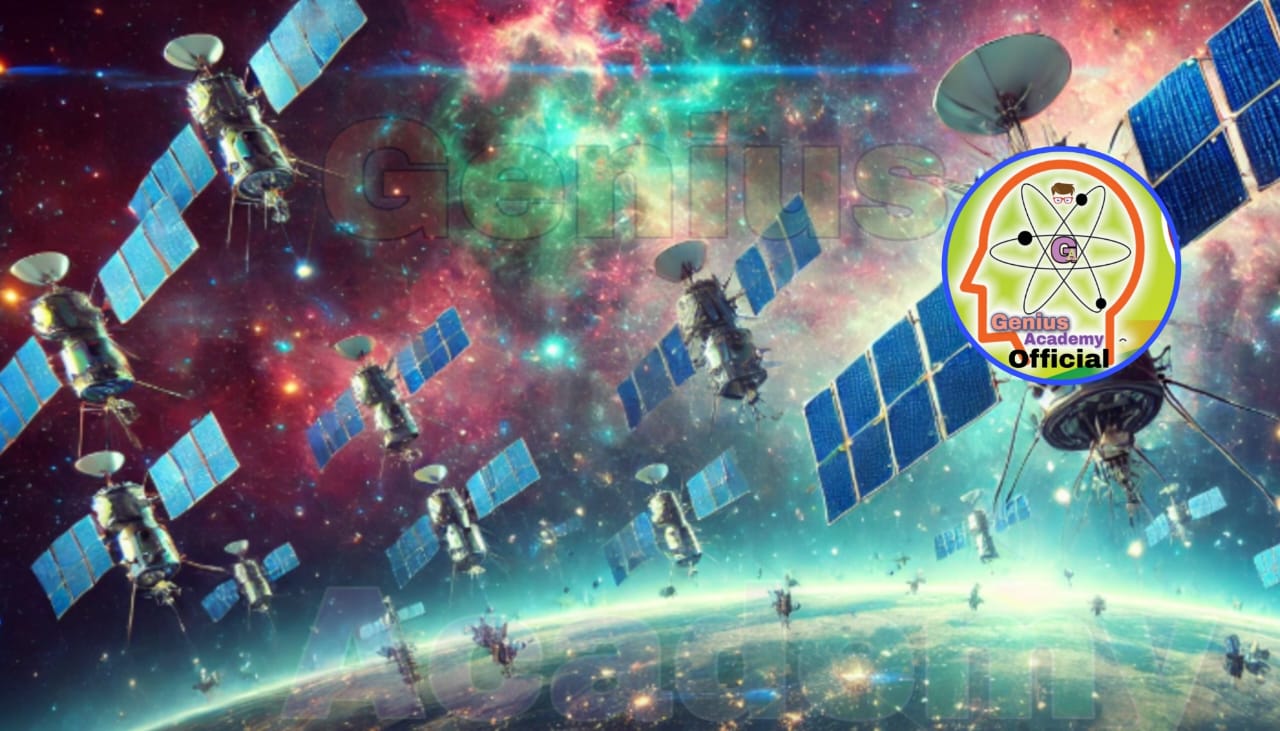Understanding Starlink: Impact and Implications on Global and Indian Connectivity
The digital age has increasingly underscored the need for fast and reliable internet connectivity across the globe. In this regard, Elon Musk’s Starlink project has emerged as a transformative force in satellite-based internet systems, promising to connect even the remotest corners of the world. With its ambitious goals and a rapid pace of implementation, Starlink aims to change the dynamics of internet access, particularly benefiting countries like India, which has diverse connectivity challenges.

Starlink: The Basics
Global Broadband Network
Launched in 2015 by SpaceX’s Elon Musk, Starlink’s mission is to deliver high-speed, low-latency internet access worldwide. The project targets areas where traditional broadband infrastructure is either unavailable or inefficient. By leveraging a network of satellites, Starlink envisions bridging the digital divide and transforming the global broadband network.
Direct Signal Transmission
Unlike conventional internet services, which often rely on terrestrial infrastructure like cables and towers, Starlink transmits signals through space. This setup involves signals reflecting off satellites to reach users on the ground. The direct communication mechanism reduces latency issues and increases the potential speed of internet services.
Satellite-Based System
Starlink’s internet service hinges on a network of satellites orbiting Earth at relatively low altitudes—typically referred to as Low Earth Orbit (LEO). This LEO configuration is a critical differentiator, ensuring that the latency is lower than traditional geostationary satellites, and offering a more seamless experience for activities like video calls, online gaming, and streaming.
Q. Low Earth Orbit (LEO)?
Ans:— Low Earth orbit (LEO) is a region of space where satellites orbit Earth at an altitude of 160–1,600 kilometers (100–1,000 miles) above the surface. It’s the closest orbital range to Earth, making it the easiest orbit to reach in terms of energy and rocket power.
LEO is considered close enough to Earth for a variety of purposes, including:—
- Transportation: Convenient for transportation
- Communication: Ideal for communication
- Observation: Good for observation
- Resupply: Convenient for resupply
Source:— NASA
Current Scale and Progress of Starlink
Massive Satellite Deployment
Since its inception, Starlink has achieved remarkable progress:
- 7,000+ Satellites Launched:— Within just five years, Starlink has accounted for more than two-thirds of all active satellites currently in orbit.
- 10,000 Planned Launches in the Next Three Years:— SpaceX plans a rapid expansion, aiming to enhance global coverage and service quality.
- 42,000 Total Satellites:— By the end of this decade, Starlink aims to have 42,000 satellites deployed, making it the largest satellite constellation in human history.
Such a large-scale deployment underscores Starlink’s commitment to creating a global internet network but also raises questions about space traffic, debris management, and long-term sustainability.
Real-World Impact of Starlink
(1) Ukraine Conflict
During the Ukraine-Russia conflict, Starlink played a vital role in maintaining communication and providing internet access amidst Russian attacks on critical infrastructure. SpaceX donated 12,000 terminals, restoring military communications and enabling civilian connectivity. This effort highlighted the strategic value of satellite-based internet during crises.
(2) Gaza Conflict
In Gaza, Starlink offered emergency connectivity during blackout periods, assisting in the coordination of humanitarian relief and medical services. The availability of communication channels during crises underscored the humanitarian potential of satellite internet services.
Starlink in India: A Timeline
2021: Pre-order Phase
Starlink’s entry into India began with a pre-order phase, wherein over 7,000 Indians paid approximately ₹27,400 each to reserve their Starlink services. This initial enthusiasm highlighted the demand for alternative internet solutions, particularly in areas with limited broadband connectivity. However, regulatory issues soon arose.
Government Action
In response to concerns from the Telecom Regulatory Authority of India (TRAI) regarding regulatory compliance and national security, the government intervened. All pre-orders were subsequently canceled, and refunds were issued. This marked a temporary setback but also emphasized the need for Starlink to align with Indian regulatory frameworks.
2024: New Developments
Recent developments indicate a positive shift, with the Indian Telecom Ministry setting conditions for Starlink’s entry, revising the regulatory framework, and updating spectrum allocation policies to accommodate new technologies.
Spectrum Policy Changes in India
Traditional Auction-Based Allocation
Historically, India’s spectrum allocation relied on an auction-based model, wherein the highest bidder received time-bound licenses for limited coverage areas. While this approach maximized government revenue, it often limited flexibility in network expansion.
New Administrative Allocation Method
The revised policy introduces a direct allocation method without auctions, providing flexible coverage and a technology-neutral approach. This change reflects India’s recognition of the need for adaptable policies to accommodate emerging technologies like Starlink.
Industry Opposition
The shift in policy has raised concerns among established players like Reliance, Airtel, and the Cellular Operators Association of India (COAI). These entities fear that direct spectrum allocation could create a monopoly and disrupt the competitive market landscape.
Data Security and Sovereignty Concerns
(1) Data Colonization Risks
Starlink’s reliance on global servers for data storage and processing raises potential risks of “data colonization,” wherein Indian user data might be processed abroad. This could compromise user privacy and threaten national security if adequate safeguards are not established.
(2) Historical Data Breaches
Concerns are amplified by past data breaches, such as:
- Facebook (2016): A data breach affecting millions of users worldwide.
- WhatsApp Spyware Attack (2019): Targeted breaches through sophisticated spyware.
- Twitter Breach (2023): Compromised millions of accounts, raising alarms about social media security.
The Indian government’s regulatory response and data localization mandates aim to protect citizens from similar breaches under Starlink’s potential services.
(3) Pricing Concerns
Starlink’s service costs remain a significant barrier. The monthly fee of ₹27,500 and equipment costs of ₹45,000 are substantially higher—nearly 30 times more expensive than local internet service providers. Affordability will be key to Starlink’s mass adoption in India.
Positive Impacts of Starlink in India
(1) Rural Connectivity
India’s rural areas, often underserved by traditional broadband, stand to gain significantly from Starlink’s satellite-based services. By potentially connecting over 2.5 lakh villages, Starlink can bridge the rural-urban digital divide, facilitating access to essential digital services, such as telemedicine and online education.
(2) Economic Benefits
The adoption of satellite internet can drive economic growth by creating new business opportunities and jobs in sectors like e-commerce, telework, and digital services. Starlink’s impact on India’s digital economy could be transformative, boosting GDP and increasing digital literacy.
(3) Technology Advancement
Starlink’s presence in India can spur advancements in space technology, foster research and development, and elevate technical skills among Indian engineers and scientists. This growth could propel India’s ambitions to become a global technology leader.
Indigenous Development Efforts in India
(1) ISRO Initiatives
India’s own space organization, ISRO, has been active in enhancing rural connectivity through satellite programs. Notable efforts include the Hughes satellite initiative, which utilizes 48 transponders in the Ka-band for high-speed rural internet services.
(2) Private Sector Contributions
India’s private sector has also stepped up with initiatives like:
- OneWeb-Bharti Partnership: This collaboration aims to establish a global satellite internet network.
- Tata’s and L&T’s Space Technology Divisions: These companies have ventured into satellite technology, enhancing competition and fostering innovation in India’s space-tech landscape.
(3) Startup Ecosystem
The Indian startup ecosystem has also witnessed growth in satellite internet ventures. Various startups are developing innovative satellite solutions tailored to India’s unique challenges, contributing to indigenous capacity-building.
Conclusion: Balancing Innovation and Regulation
Starlink’s satellite-based internet has the potential to revolutionize connectivity in India and the world, offering unprecedented benefits in terms of access, speed, and reliability. However, significant challenges remain, including regulatory hurdles, pricing issues, data security concerns, and industry opposition. As India seeks to embrace next-generation technologies, a balanced approach that encourages innovation while ensuring data sovereignty, market competition, and affordability is essential. By fostering collaboration between government bodies, industry leaders, and international players like Starlink, India can harness the transformative power of satellite internet to drive economic growth, bridge the digital divide, and build a more digitally inclusive society.
Daily Mains Practice Questions
UPSC (CSE) Mains Questions on the Starlink in India:
1. General Studies Paper II (Governance, International Relations, Polity)
| [Q1.] Discuss how satellite-based internet systems like Starlink can contribute to bridging the digital divide in India, especially in rural areas. Highlight the policy measures required to maximize their benefits while addressing regulatory concerns. |
| [Q2.] Examine the implications of spectrum policy changes on satellite-based internet services in India. How do traditional auction-based allocation and new administrative methods differ, and what impact might these have on market dynamics and competition? |
| [Q3.] With reference to global satellite internet initiatives like Starlink, critically evaluate the regulatory challenges faced by India in balancing technological advancement, national security, and data sovereignty. |
| [Q4.] Analyze how international satellite-based systems like Starlink can impact India’s diplomatic relations, especially in scenarios involving geopolitical conflicts and humanitarian interventions. |
2. General Studies Paper III (Science & Technology, Economic Development, Environment, Security)
| [Q5.] “The increasing deployment of Low Earth Orbit satellites for internet services has potential economic benefits and significant environmental risks.” Critically analyze this statement with reference to the large-scale deployment by Starlink. |
| [Q6.] What are the data security and privacy concerns associated with global satellite-based internet services operating in India? Suggest measures to ensure data protection and national security. |
| [Q7.] How can satellite-based internet solutions, such as Starlink, enhance India’s rural connectivity and contribute to economic growth? Discuss their role in fostering digital inclusion. |
| [Q8.] Evaluate the role of indigenous satellite-based solutions, such as ISRO and private sector initiatives, in enhancing India’s digital connectivity. How can these efforts complement international players like Starlink? |
| [Q9.] Discuss the impact of economic barriers such as high pricing on the adoption of satellite-based internet services like Starlink in India. What measures can be taken to make such services more affordable? |
3. General Studies Paper IV (Ethics, Integrity, and Aptitude)
| [Q10.] Highlight the ethical implications of using satellite-based internet for state control and surveillance. How can governments ensure a balance between national security and individual freedoms? |
| [Q11.] Examine the ethical responsibilities of global corporations like SpaceX in promoting equitable access to internet services in diverse socio-economic environments. |
Frequently Asked Questions (FAQs) on Starlink in India 2024
1. What is Starlink and how does it function?
Answer:—
Starlink is a satellite-based internet service operated by SpaceX that provides global broadband connectivity through a network of Low Earth Orbit satellites. It transmits internet signals directly through space, reducing latency and offering high-speed internet access even in remote areas.
2. What are the main benefits of satellite-based internet services like Starlink for India?
Answer:—
Benefits include improved rural connectivity, economic growth through digital inclusion, job creation, technology advancement, and more efficient internet access in underserved regions.
3. Why did the Indian government raise concerns regarding Starlink’s entry in 2021?
Answer:—
Concerns were raised due to regulatory compliance issues, national security, and spectrum allocation policies. Pre-orders were canceled, and refunds issued to ensure adherence to Indian laws.
4. How is India preparing for satellite-based internet services?
Answer:—
India is revising its spectrum policies, encouraging indigenous efforts like ISRO’s initiatives, and promoting public-private partnerships to build satellite-based solutions tailored to India’s needs.
5. What are the potential downsides of Starlink’s large-scale satellite deployment?
Answer:—
Downsides include risks of space traffic congestion, environmental concerns from space debris, data privacy issues, high costs, and possible monopolistic control by international players.
6. How can India address data security concerns with global satellite-based internet providers?
Answer:—
Measures include strong data localization laws, regulatory frameworks for data protection, mandatory data sharing and storage norms within India, and effective monitoring of cross-border data flows.
7. Is Starlink affordable for most Indian users?
Answer:—
Currently, Starlink’s pricing remains significantly higher than local providers, making it less accessible. Affordability can be improved through subsidies, competition, or market-driven price reductions.
8. How do Starlink and other satellite-based internet services differ from traditional broadband?
Answer:—
Traditional broadband relies on terrestrial infrastructure like cables, while satellite-based systems transmit signals directly through satellites, offering higher reach and lower latency, especially in remote regions.
9. What are the ethical concerns associated with satellite-based internet services?
Answer:—
Key ethical concerns include data privacy, potential state surveillance, bias in internet access, and control over information flow by powerful entities, both corporate and state-led.
10. What role can indigenous players like ISRO play alongside international services like Starlink?
Answer:—
Indigenous players can complement international efforts by offering localized solutions, reducing dependency on foreign providers, fostering innovation, and addressing unique national needs.
_








